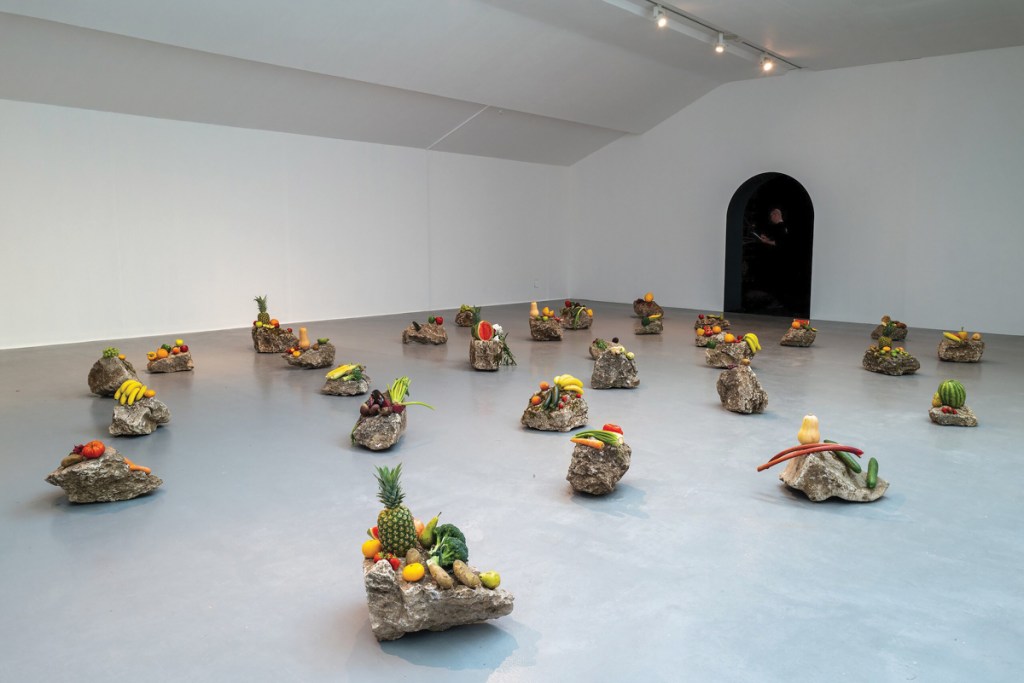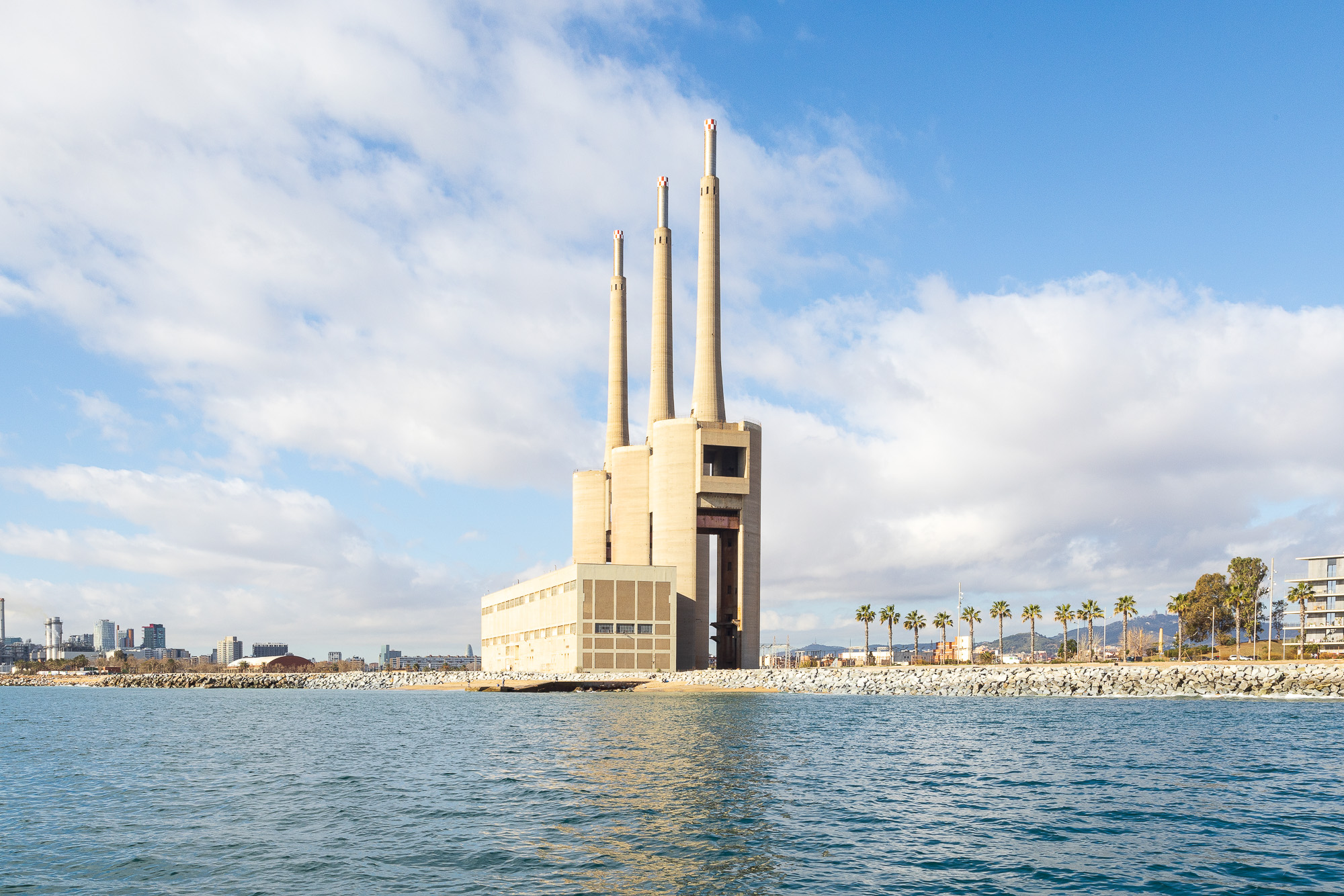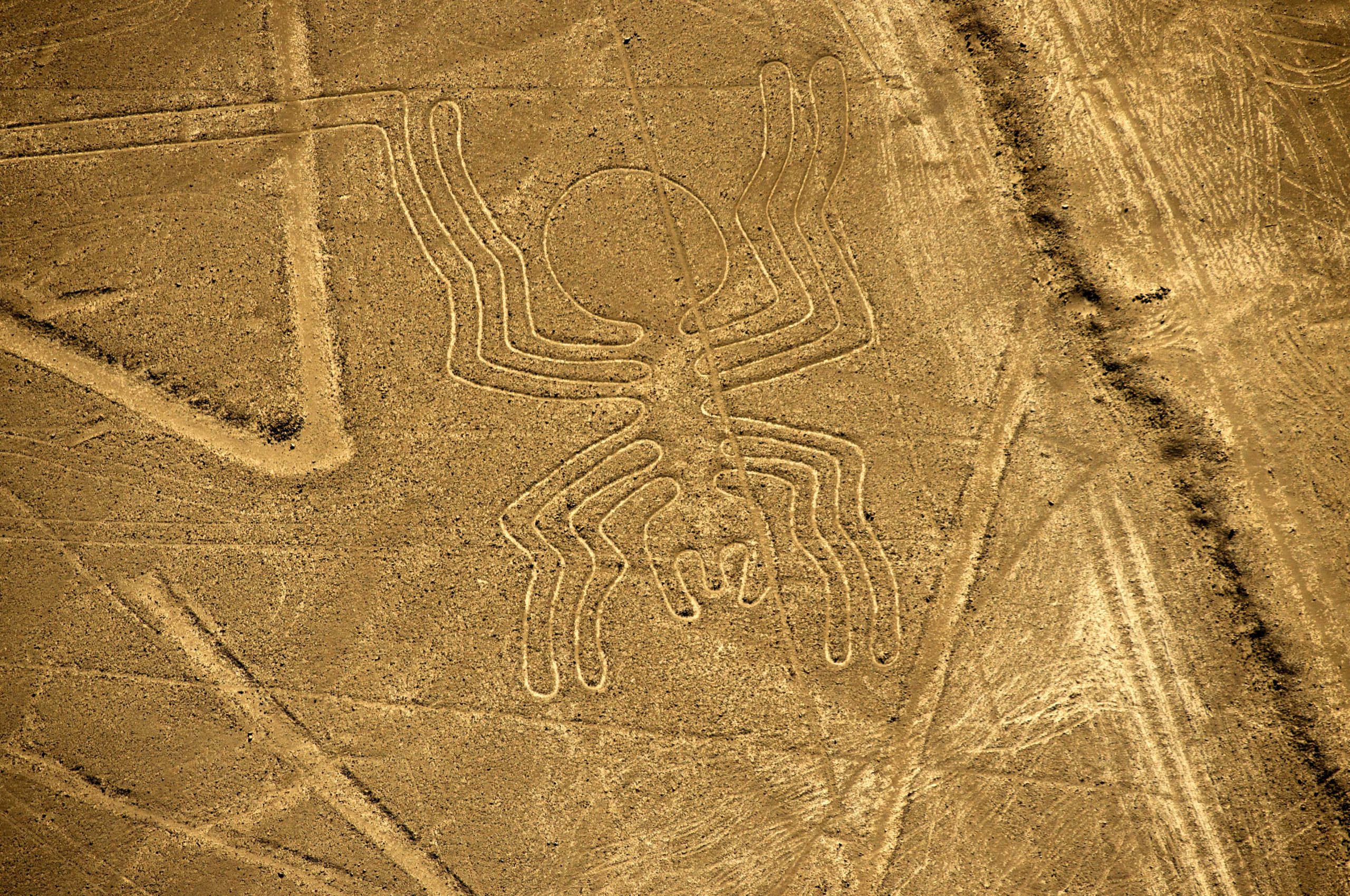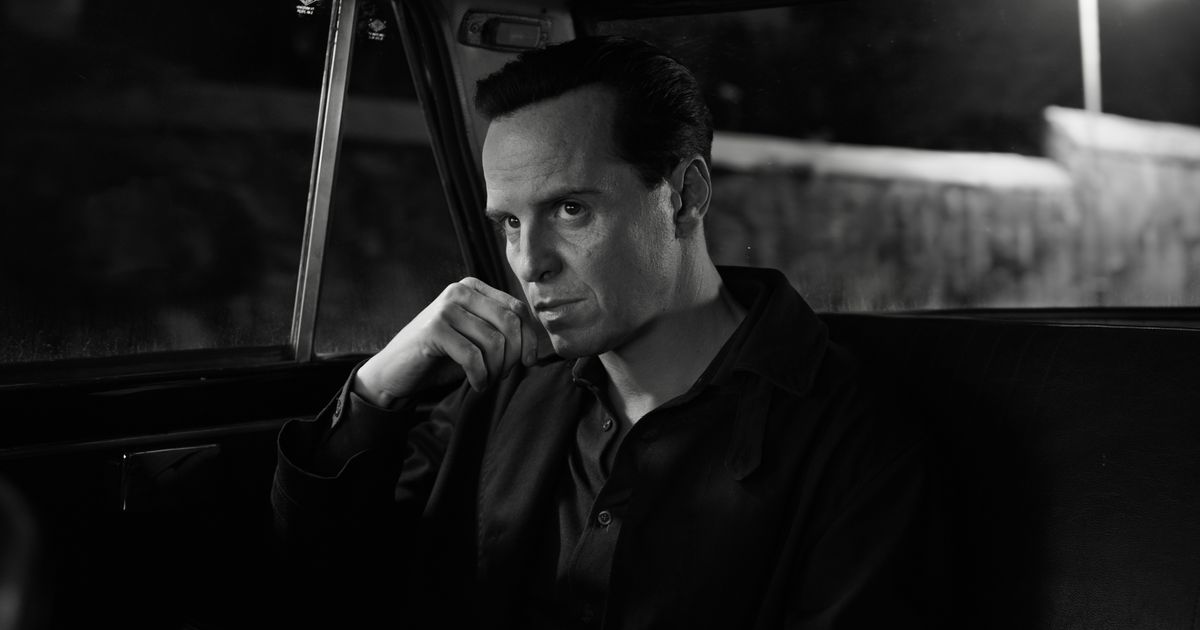Museums have long been compared to mausoleums, lifeless places in which objects are permanently laid to rest. In most cases, this is true: artworks tend to spend a lot of time stacked in storage once they enter institutions. Edgar Calel’s 2021 installation The Echo of an Ancient Form of Knowledge (Ru k’ox k’ob’el jun ojer etemab’el) tests that logic and refuses to be confined.
There are seven versions of the installation, one for each star in the Big Dipper. This year, two versions premiered in biennials: one in Gwangju, the other in Liverpool. Both comprise a group of stones, with actual peppers, bananas, lemons, and other fruits laid on top.
In a unique agreement, Tate assumed the role of custodian rather than owner of one version, along with the Mayan ritual associated with it. The institution agreed to steward the work for 13 years, a number corresponding to that of the major joints in the human body, according to the Mayan cosmovision. Thereafter, Tate has the option to renew custodianship; Calel retains the right to choose whether to renew or to send it elsewhere. Calel also stipulated that he be allowed to have a Kaqchikel person perform the ritual of laying out the fruit. If none were available, the artist would personally choose someone to do it.
Calel, 36, sees the arrangement as a means of bringing his Maya Kaqchikel heritage to the rest of the world. “I want to invite the public to see what I see daily in my community, and to see how all the knowledge has been handed down by my ancestors,” Calel said, speaking by Zoom, with the help of a translator, from Chi Xot (San Juan Comalapa), his Guatemalan hometown.
Calel’s studio, which includes an altar where members of his community make offerings, represents the merger of conceptualism and Indigenous tradition that undergirds his work. His father is a painter, his mother is a weaver, and Calel himself trained at the Rafael Rodríguez Padilla National School of Plastic Arts in Guatemala City.
His paintings contain plainspoken scenes that convey the sense of unity he has found in Chi Xot. Ru raxalh ri Rua Ch’ ulew (The Greenness of the Land), 2022, shows three men bent over the hood of a pickup truck as a child peers out a passenger window, and no fewer than 17 people stand in the truck bed, posing as if for a group picture. Yet on the biennial circuit—where Calel has emerged as a star in recent years at the Berlin Biennale, the Carnegie International, and the Bienal de São Paulo—he is best known for sculpture.
Edgar Calel, B’alab’äj, 2023.
Courtesy Proyectos Ultravioleta/Photo Charles Benton
Calel doesn’t seem interested in explaining Kaqchikel heritage and mythology to viewers. Instead, his primary audience appears to be his own community. If others find ways to relate to the work, perhaps through participation or contemplation, he accepts that, and, to some extent, even encourages it.
In the case of his recent SculptureCenter commission, B’alab’äj (Jaguar Stone)—a gorgeous expansive installation of soil, rocks, wood, and fire that references a landmark stone in the Chi Xot foothills—Calel made sure to engage the New York institution’s staff in the work’s making: the workers themselves lit arrays of candles set near large rocks in the arrangement, just as worshippers in Chi Xot might do in rituals at the piece’s namesake stone. “I requested that when they light the candles, they be conscious of what they’re doing,” Calel said. “It’s knowing that there’s a sense of spirituality that’s involved in the process, not only in lighting the candles, but in being present in the installation.”



